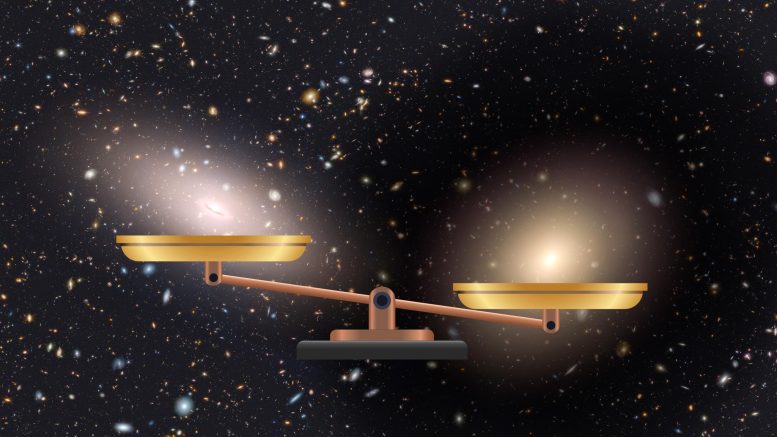
Comparison between a conventional galaxy (ESO 325-G004) enveloped in a halo of dark matter, occupying the heaviest plate on the weight scale, and the galaxy NGC 1277 (on the left), in which the study of the mass distribution reveals the absence of dark matter. Credit: Design: Gabriel Pérez Díaz (IAC). Image of NGC 1277: NASA, ESA, and M. Beasley (IAC). Image of ESO 325-G004: NASA, ESA, and The Hubble Heritage Team (STScI/AURA); J. Blakeslee (Washington State University)
International research led by the Instituto de Astrofísica de Canarias (IAC) and the University of La Laguna (ULL) has found the first evidence of a massive galaxy with no dark matter. The result is a challenge to the current standard model of cosmology. The study is published in the specialized journal Astronomy and Astrophysics.
A team of scientists, led by the researcher at the IAC and the University of La Laguna (ULL) Sebastién Comerón, has found that the galaxy NGC 1277 does not contain dark matter. This is the first time that a massive galaxy (it has a mass several times that of the Milky Way) does not show evidence of this invisible component of the universe. “This result does not fit in with the currently accepted cosmological models, which include dark matter,” explains Comerón.
Current Cosmological Models
In the current standard model of cosmology, massive galaxies contain substantial quantities of dark matter, a type of matter which does not interact in the same way as normal matter; the only evidence for its existence is the strong gravitational pull that it exerts on the stars and the gas nearby, and this interaction is observable.
NGC 1277 and Relic Galaxies
NGC 1277 is considered a prototype “relic galaxy” which means a galaxy that has had no interactions with its neighbors. Galaxies of this type are very rare, and they are considered the remnants of giant galaxies which formed in the early days of the universe.
“The importance of relic galaxies in helping us to understand how the first galaxies formed was the reason we decided to observe NGC 1277 with an integral field spectrograph,” explains Comerón.
Understanding the Mass Distribution
The team generated kinematic maps from the spectra, which allowed them to ascertain the distribution of mass within the galaxy up to a radius of roughly 20,000 light-years. It was determined that the mass distribution in NGC 1277 corresponded solely to the distribution of the stars. From this, they inferred that there cannot be more than 5% of dark matter within the observed radius, although the observations are consistent with the complete absence of this component.
Discrepancy With Cosmological Models
However, present cosmological models predict that a galaxy with the mass of NGC 1277 should have at least 10 % of their mass in the form of dark matter, with a maximum of 70 % in this form. “This discrepancy between the observations and what we would expect is a puzzle, and maybe even a challenge for the standard model” notes Ignacio Trujillo, a researcher at the IAC and the ULL, who participated in the study.
Explaining the Absence of Dark Matter
The study proposes two possible explanations for the lack of dark matter in NGC 1277. “One is that the gravitational interaction with the surrounding medium within the galaxy cluster in which this galaxy is situated has stripped out the dark matter” comments Anna Ferré-Mateu, a researcher at the IAC and the ULL who also participated in the study. “The other is that the dark matter was driven out of the system when the galaxy formed by the merging of protogalactic fragments, which gave rise to the relic galaxy.”
Remaining Questions
Neither of these explanations fully satisfies the authors of the study, “so the puzzle of how a massive galaxy can form without dark matter remains a puzzle” insists Comerón. In order to continue researching the mystery the team plans to make new observations with the WEAVE instrument on the William Herschel Telescope (WHT) at the Roque de los Muchachos Observatory, in the Canary Island of La Palma
Implications on Dark Matter Theories
If this the result, that NGC 1277 does not have dark matter, is confirmed, it would cast strong doubt on alternative models for dark matter, namely theories in which gravity is modified and the major part of the gravitational attraction within galaxies is due to a slight change in the law of gravity on large scales. “Although the dark matter in a specific galaxy can be lost, a modified law of gravity must be universal, it cannot have exceptions, so that a galaxy without dark matter is a refutation of this type of alternative to dark matter,” notes Trujillo.
Reference: “The massive relic galaxy NGC 1277 is dark matter deficient: From dynamical models of integral-field stellar kinematics out to five effective radii” by Sébastien Comerón, Ignacio Trujillo, Michele Cappellari, Fernando Buitrago, Luis E. Garduño, Javier Zaragoza-Cardiel, Igor A. Zinchenko, Maritza A. Lara-López, Anna Ferré-Mateu and Sami Dib, 11 July 2023, Astronomy and Astrophysics.
DOI: 10.1051/0004-6361/202346291

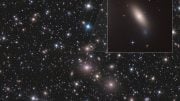

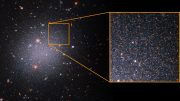

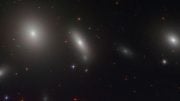
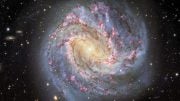

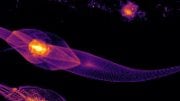
There’s a lot of uncertainty about NGC 1277, not to mention the uncertainty about what Dark Matter is! One possibility, from a view of String Theory, is that Dark Matter appears to us as an effect of string/anti-string annihilations. As you may know, quantum mechanics requires that strings must be formed as pairs in the quantum foam – a string and an anti-string – that immediately annihilate each other. Quantum mechanics also requires both the string and anti-string to be surrounded by “jitters” that reduce their monstrous vibrating energies. What if this jitter remains for a fraction of an instant after their string/anti-string annihilations? This temporary jitter would be seen by us as matter, via E=mc2, for that instant before it too returns to the foam. That’s why we never see it – the “mass” lasts only for that instant but is repeated over and over and over, all over. Specifics on this can be found by searching YouTube for “Dark Matter – A String Theory Way”
Spoiler alert.
Looks like we have a nice view, unobstructed by any diffusion through a bulge, of light rays following a luminous “X” pattern often seen in spiral galaxies viewed edgewise, such as NGC 2424.
The “X” pattern apparently follows a pair of cones at the boundary of core-driven opposing gravitational spin-induction responses. The handedness of induced macro-object spins near the galactic equator is supposed here to be opposite to that of spins closer to the galactic spin axis. The “X” pattern may be enhanced by the effects of cold (or gravitationally dense-packed) baryons naturally behaving like spinning little triaxial retro-reflectors for gravity spin information flows.
“Although the dark matter in a specific galaxy can be lost, a modified law of gravity must be universal, it cannot have exceptions, so that a galaxy without dark matter is a refutation of this type of alternative to dark matter”
Refuted above. These guys don’t have a clue as to why any odd galaxy is as bright as it appears.
DM research is bent universe, overfunded Einsteinian Coddled Cargo Cult (CCC) gravity logic, a spearhead of divisive ersatz diversity. Of course MOND “gravity modification” (LOL) people have no response because they’re just a different “false opposition” form of overfunded Einsteinian CCC logic.
It’s pathetic how people actually stake their professional reputations on dark matter.
Maybe DM experts can invent an explanation for why “pea green” dwarf galaxies also exist.
Seems all the other “too bright to be ignored and so considered DM-impoverished” galaxies are dwarves sitting close to much larger galaxies, situated near their spin planes which generally sit flat along the visual axis. Not sure though.